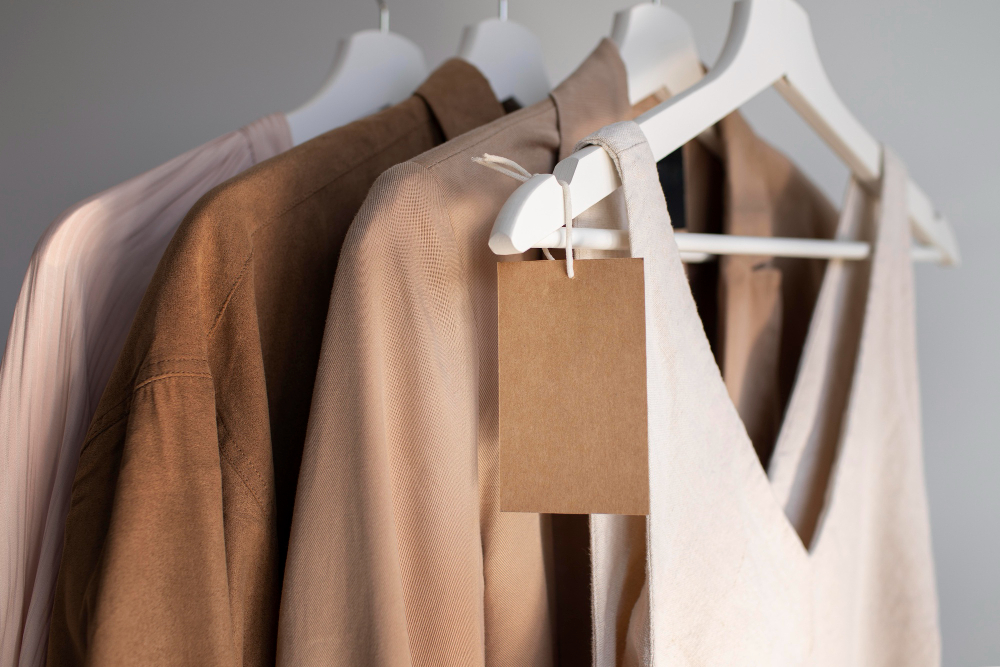Introduction to Sustainable Fashion
The Rise of Sustainable Fashion
Sustainable fashion has emerged as a significant movement in response to the environmental and ethical issues associated with the traditional fashion industry. As consumers become more aware of the impact of their clothing choices, there is a growing demand for fashion that is not only stylish but also sustainable.
Why Sustainable Fashion Matters
The fashion industry is one of the largest polluters in the world, contributing to environmental degradation, climate change, and unethical labor practices. Embracing sustainable fashion helps mitigate these issues by promoting eco-friendly materials, ethical production processes, and responsible consumption.
Understanding Sustainable Fashion
Defining Sustainable Fashion
Sustainable fashion refers to clothing, accessories, and footwear that are designed, manufactured, distributed, and used in ways that minimize their environmental impact and maximize social benefits. This includes using eco-friendly materials, reducing waste, and ensuring fair labor practices.
The Principles of Sustainable Fashion
The principles of sustainable fashion include reducing waste, using sustainable materials, ensuring ethical labor practices, and promoting circular fashion. These principles aim to create a more sustainable and equitable fashion industry.
The Environmental Impact of Fashion
Pollution and Waste
The traditional fashion industry is a major contributor to pollution and waste. Textile dyeing is one of the largest sources of water pollution globally, and millions of tons of clothing end up in landfills each year.
Carbon Footprint
The fashion industry is responsible for a significant portion of global carbon emissions. The production, transportation, and disposal of clothing contribute to greenhouse gas emissions, which drive climate change.
Key Components of Sustainable Fashion
Eco-Friendly Materials
One of the core elements of sustainable fashion is the use of eco-friendly materials. These materials are often biodegradable, recycled, or sourced from sustainable practices. Examples include organic cotton, bamboo, and recycled polyester.
Ethical Production
Ethical production ensures that the people making the clothes are treated fairly, paid a living wage, and work in safe conditions. Brands committed to ethical production often adhere to fair trade principles and certifications.
The Role of Technology in Sustainable Fashion
Innovations in Sustainable Textiles
Technological advancements are driving innovations in sustainable textiles. For example, lab-grown leather, made from cultured animal cells, offers a cruelty-free alternative to traditional leather.
Digital Fashion and Virtual Garments
Digital fashion and virtual garments are gaining popularity as sustainable alternatives. These digital designs can be worn in virtual spaces, reducing the need for physical clothing and minimizing waste.
The Circular Fashion Economy
What is Circular Fashion?
Circular fashion aims to create a closed-loop system where clothing is designed, produced, and consumed in a way that allows it to be reused, recycled, or composted at the end of its life. This contrasts with the traditional linear fashion model of “take, make, dispose.”
Benefits of Circular Fashion
Circular fashion reduces waste, conserves resources, and promotes sustainable consumption. It encourages the use of durable materials, clothing repair, and recycling to extend the life cycle of garments.
Sustainable Fashion Brands
Leading Sustainable Fashion Brands
Several fashion brands are leading the way in sustainability. Patagonia, known for its environmental activism, uses recycled materials and promotes fair labor practices. Another example is Stella McCartney, a luxury brand committed to cruelty-free and eco-friendly fashion.
How to Identify Sustainable Brands
Consumers can identify sustainable brands by looking for certifications like Fair Trade, GOTS (Global Organic Textile Standard), and B Corp. Additionally, brands that are transparent about their supply chains and sustainability practices are more likely to be genuinely committed to sustainability.
The Role of Consumers in Sustainable Fashion
Making Conscious Choices
Consumers play a crucial role in driving the demand for sustainable fashion. By making conscious choices, such as buying from sustainable brands, reducing consumption, and recycling clothing, individuals can contribute to a more sustainable fashion industry.
Educating Yourself on Sustainable Practices
Staying informed about sustainable fashion practices and the impact of the traditional fashion industry can help consumers make better choices. Resources like documentaries, books, and online articles provide valuable insights into the world of sustainable fashion.
Sustainable Fashion Trends
Slow Fashion
Slow fashion is a movement that advocates for slowing down the production and consumption of clothing. It emphasizes quality over quantity, encouraging consumers to buy fewer, higher-quality items that will last longer.
Upcycling and Recycling
Upcycling and recycling are key trends in sustainable fashion. Upcycling involves transforming old or discarded materials into new, higher-quality products, while recycling involves reprocessing materials to create new products.
The Future of Sustainable Fashion
Emerging Innovations
The future of sustainable fashion looks promising, with emerging innovations like biodegradable fabrics, plant-based dyes, and 3D printing. These advancements have the potential to further reduce the environmental impact of fashion.
Global Collaboration and Policies
Global collaboration and policies are essential for driving systemic change in the fashion industry. Initiatives like the Fashion Pact and the UN’s Sustainable Development Goals encourage industry-wide commitment to sustainability.
The Economic Impact of Sustainable Fashion
Supporting Local Economies
Sustainable fashion often supports local economies by sourcing materials and manufacturing products locally. This reduces carbon emissions from transportation and promotes economic development in local communities.
Job Creation and Fair Wages
By adhering to ethical labor practices, sustainable fashion brands create jobs that pay fair wages and provide safe working conditions. This contributes to social equity and economic stability.
Sustainable Fashion and Social Justice
Ethical Labor Practices
Sustainable fashion is closely linked to social justice, as it prioritizes ethical labor practices. This includes ensuring fair wages, safe working conditions, and the rights of workers in the fashion supply chain.
Inclusivity and Representation
Inclusivity and representation are important aspects of sustainable fashion. Brands that promote diversity and inclusivity in their designs, marketing, and hiring practices contribute to a more equitable industry.
Consumer Behavior and Sustainable Fashion
Changing Shopping Habits
Consumer behavior is shifting towards more sustainable shopping habits. Many consumers are now prioritizing quality over quantity, opting for second-hand or vintage clothing, and supporting sustainable brands.
The Rise of Second-Hand and Vintage Fashion
The popularity of second-hand and vintage fashion is growing as consumers seek unique, sustainable alternatives to fast fashion. Thrift stores, online resale platforms, and vintage shops offer a wide range of options.
The Role of Media and Influencers in Sustainable Fashion
Raising Awareness
Media and influencers play a crucial role in raising awareness about sustainable fashion. By promoting sustainable brands and educating their followers, influencers can drive positive change in the fashion industry.
Influencer Partnerships with Sustainable Brands
Collaborations between influencers and sustainable fashion brands can amplify the message of sustainability and reach a broader audience. These partnerships often highlight the benefits of sustainable fashion and encourage followers to make more conscious choices.
Sustainable Fashion Events and Initiatives
Fashion Weeks and Sustainable Showcases
Sustainable fashion events and showcases, such as Eco Fashion Week and Copenhagen Fashion Summit, provide platforms for sustainable brands to present their collections. These events highlight the latest trends and innovations in sustainable fashion.
Industry-Wide Initiatives
Industry-wide initiatives like the Sustainable Apparel Coalition and the Global Fashion Agenda bring together brands, policymakers, and stakeholders to drive collective action towards sustainability.
The Impact of Sustainable Fashion on Personal Style
Finding Your Unique Style
Sustainable fashion encourages individuals to find their unique style rather than following fast fashion trends. By investing in timeless, high-quality pieces, consumers can build a wardrobe that reflects their personal taste and values.
Building a Capsule Wardrobe
A capsule wardrobe consists of a curated selection of versatile, high-quality pieces that can be mixed and matched. This approach promotes sustainable consumption and helps individuals create a cohesive, stylish wardrobe.
Sustainable Fashion for Different Lifestyles
Sustainable Fashion for the Corporate World
Sustainable fashion is not limited to casual or everyday wear. Many brands offer eco-friendly options suitable for the corporate world, including tailored suits, blouses, and dresses made from sustainable materials.
Sustainable Fashion for Active Lifestyles
Activewear brands are also embracing sustainability, offering performance wear made from recycled materials and eco-friendly fabrics. This allows individuals to maintain an active lifestyle while supporting sustainable fashion.
The Role of Education in Sustainable Fashion
Incorporating Sustainability in Fashion Education
Fashion schools and universities are increasingly incorporating sustainability into their curricula. This includes teaching students about eco-friendly materials, ethical production, and sustainable design practices.
Empowering the Next Generation of Designers
By educating the next generation of designers about sustainability, the fashion industry can foster innovation and drive positive change. Young designers are often at the forefront of sustainable fashion, bringing fresh perspectives and creative solutions.
Sustainable Fashion and Cultural Heritage
Preserving Traditional Techniques
Sustainable fashion often involves preserving traditional techniques and craftsmanship. By supporting artisans and incorporating traditional methods, sustainable fashion brands contribute to cultural preservation and promote diversity.
Celebrating Cultural Diversity
Sustainable fashion celebrates cultural diversity by incorporating elements from different cultures and traditions. This enriches the fashion landscape and promotes inclusivity and representation.
Conclusion: The Future of Sustainable Fashion
Embracing a Sustainable Fashion Future
The future of fashion is undoubtedly sustainable. As consumers, brands, and policymakers continue to prioritize sustainability, the fashion industry can evolve to become more environmentally friendly, ethical, and inclusive.
Taking Action Towards Sustainability
Every individual has the power to contribute to a sustainable fashion future. By making conscious choices, supporting sustainable brands, and advocating for systemic change, we can collectively drive the fashion industry towards a more sustainable and equitable future.
Key Points to Remember
- Eco-Friendly Materials: Sustainable fashion uses materials that are environmentally friendly, such as organic cotton and recycled polyester.
- Ethical Production: Ensuring fair labor practices and safe working conditions is a cornerstone of sustainable fashion.
- Consumer Power: Individuals can drive change by making conscious choices and supporting sustainable brands.
- Technological Innovation: Advances in technology are leading to new sustainable materials and practices.
- Global Collaboration: Industry-wide initiatives and policies are essential for systemic change in fashion sustainability.
FAQs
- What is sustainable fashion?
- Sustainable fashion refers to clothing, accessories, and footwear that are designed, manufactured, and used in ways that minimize environmental impact and promote social equity.
- Why is sustainable fashion important?
- Sustainable fashion addresses the environmental and ethical issues associated with the traditional fashion industry, promoting eco-friendly materials, ethical production, and responsible consumption.
- How can I identify sustainable fashion brands?
- Look for certifications like Fair Trade, GOTS, and B Corp, and choose brands that are transparent about their supply chains and sustainability practices.
- Is sustainable fashion more expensive?
- While some sustainable fashion items may have higher upfront costs, they often offer better quality and durability, leading to long-term savings.
- Can sustainable fashion be stylish?
- Absolutely! Sustainable fashion brands offer a wide range of stylish, high-quality options that cater to various tastes and preferences.
- What are some examples of eco-friendly materials?
- Examples include organic cotton, bamboo, hemp, and recycled polyester. These materials are often biodegradable and have a lower environmental impact.
- How does sustainable fashion support ethical labor practices?
- Sustainable fashion brands ensure fair wages, safe working conditions, and the rights of workers, often adhering to fair trade principles and certifications.
- What is circular fashion?
- Circular fashion aims to create a closed-loop system where clothing is designed, produced, and consumed in a way that allows it to be reused, recycled, or composted at the end of its life.
- How can I make more sustainable fashion choices?
- Buy from sustainable brands, reduce consumption, recycle clothing, and support second-hand and vintage fashion.
- What role do influencers play in sustainable fashion?
- Influencers raise awareness, promote sustainable brands, and educate their followers about the benefits of sustainable fashion.




